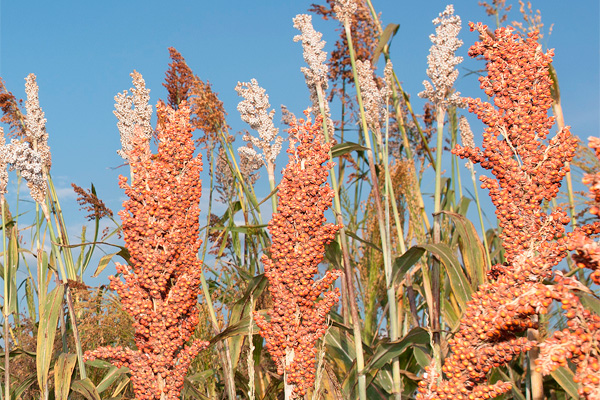Extrusion improves digestibility of sorghum starch

Researchers found out that extrusion of sorghum starch shows positive effects enhances ruminal and intestinal digestibility, rumen microbial yield and growth in lambs fed on high-concentrate diets.
Sorghum was extruded using the following four temperature and pressure combinations: T1 = 90 °C/17 bars, T2 = 115 °C/24 bars, T3 = 150 °C/55 bars and, T4 = 175 °C/95 bars. Ruminal, intestinal and total tract DM content, starch and N degradability of the extruded sorghum (T1, T2, T3, T4), unprocessed sorghum (T0; control) and barley grain (B) were determined using nylon bag and mobile bag techniques in a completely randomized block design (CRBD).
Extrusion under T3 conditions increased in vitro ruminal digestibility, solubility (a), fractional disappearance rate (c) and effective degradability (ED) of DM and starch in sorghum to near similar to those of B. T3 also had higher (P<0.05) ruminal and intestinal digestion rates for dm, starch and n compared to t0, t1, t2 and t4 suggesting that extruding sorghum under t3 conditions could be used as replacement of barley in lamb diets. in the second experiment, eighteen male iranian baluchi lambs were randomly allocated into three dietary treatments in a complete randomized design (crd). dietary grain in the treatment-concentrates were barley (b) as control, barley and extruded sorghum (under t3 conditions) in equal proportion (bs>E) and extruded sorghum (SE).
Dry matter and N intakes were not affected by source of grain, but because of the higher starch content in sorghum, lambs on SE diet had greater starch intake (995 g/d) and higher (P<0.01) starch (291 g d) and n (53.1 g d) outflow to the small intestine. of the total input of starch to the small intestine, higher (p><0.01) amount (253 g d) disappeared in s>E compared to B and BSE lambs which was reflected by the higher glucose concentration in the portal vein of SE lambs. Lambs fed SE diet also had greater ruminal microbial N (MN) yield (24.1 g/d), although ruminal pH and total VFA did not show any significant difference among treatments. Consequently, SE lambs recorded greater averaged daily gain (ADG) and more efficient (P<0.01) feed conversion ratio (fcr) compared to b or bs>E lambs.
It can be concluded that extrusion under 150 °C/55 bars improves digestibility of sorghum starch and provides an option to completely replace barley in lambs.
The study will be published in the March edition of the journal ‘Animal Feed Science and Technology’.
Join 26,000+ subscribers
Subscribe to our newsletter to stay updated about all the need-to-know content in the feed sector, three times a week. Beheer
Beheer









 WP Admin
WP Admin  Bewerk bericht
Bewerk bericht